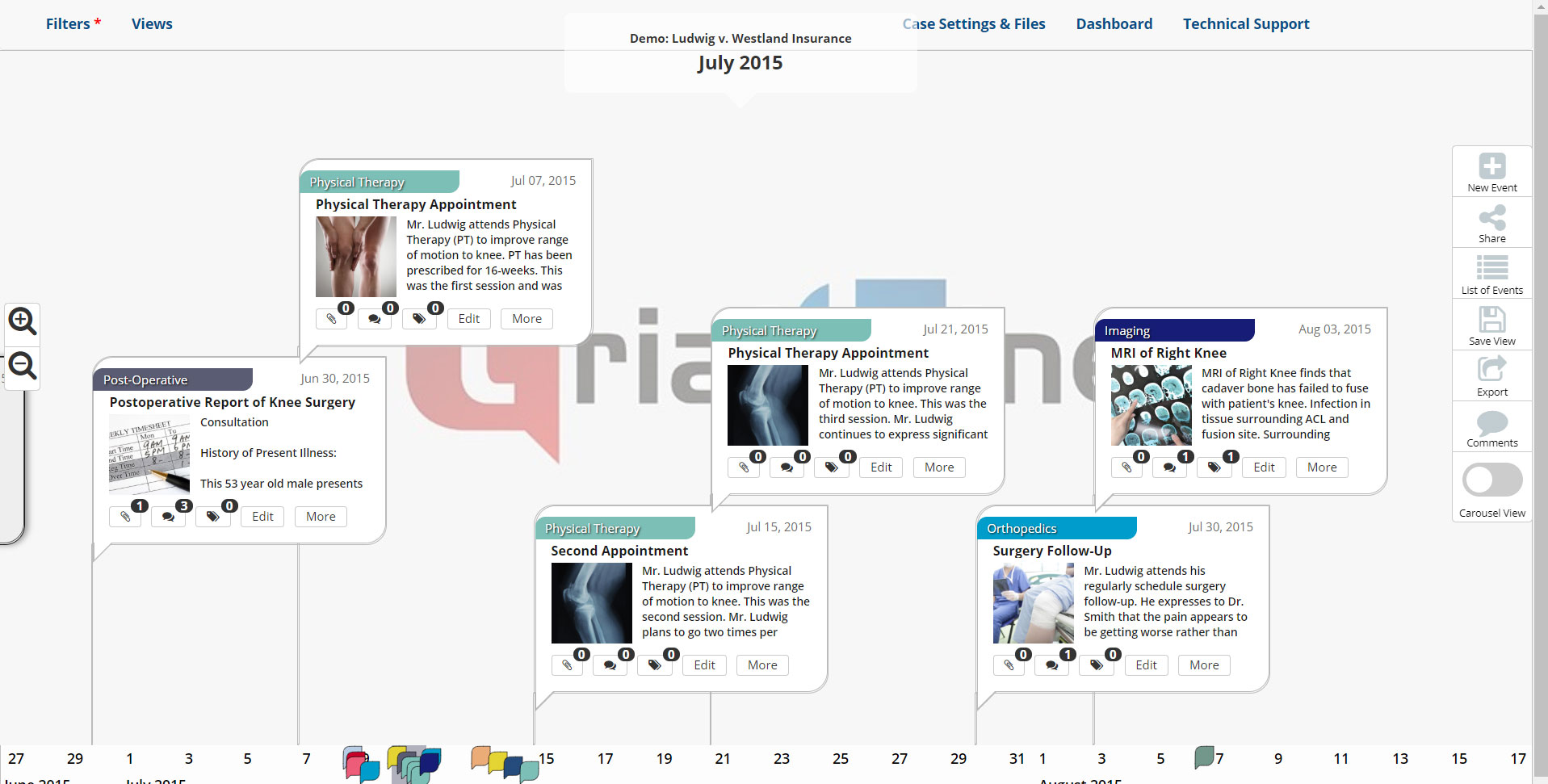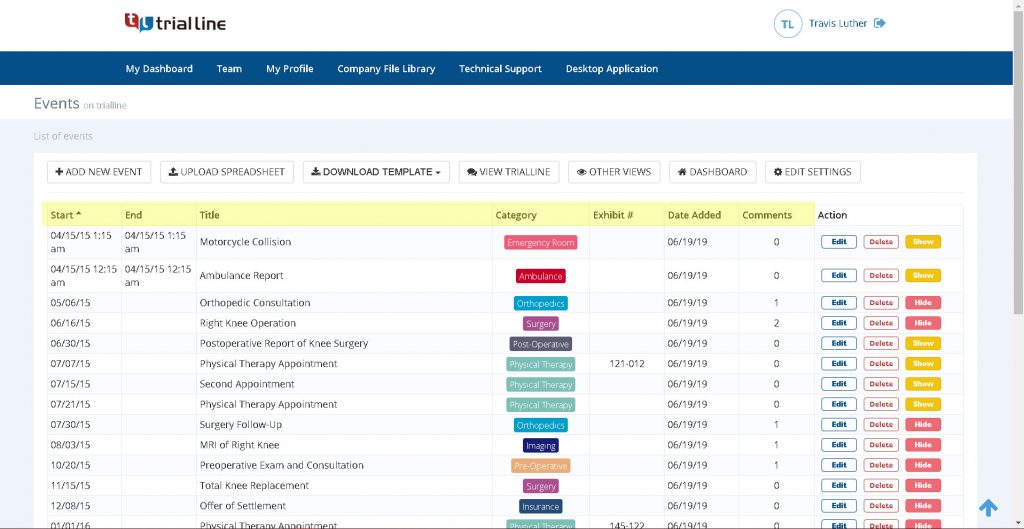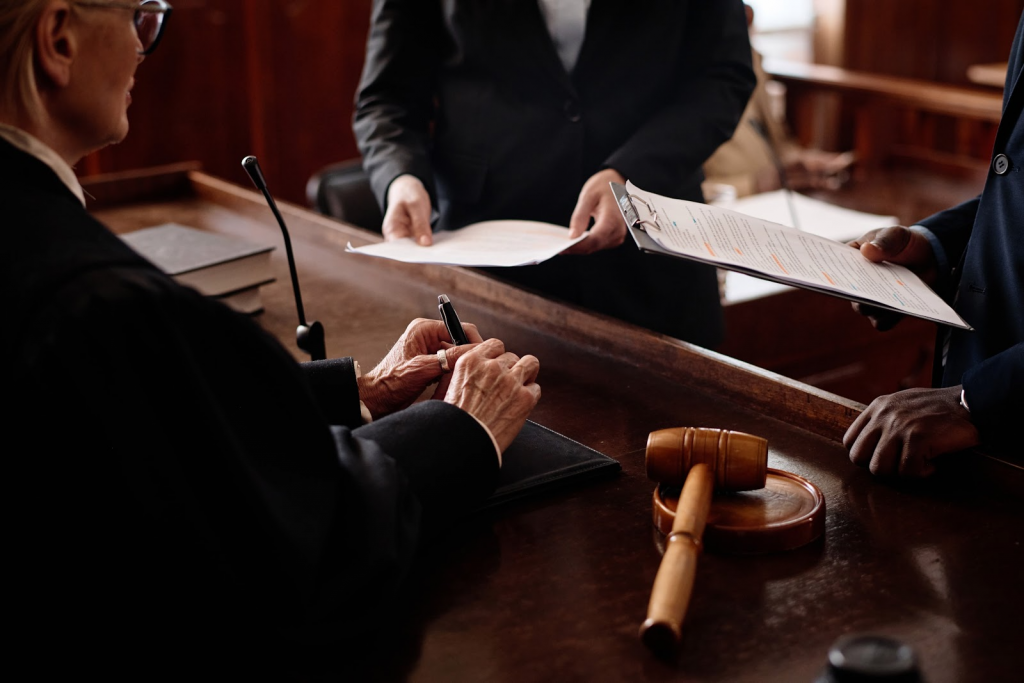Every attorney knows legal cases can be complicated and difficult things. They often involve:
- Multiple witnesses,
- hundreds of facts,
- and thousands of documents.
Because of the education and training you undertake, most of you have learned how to understand complex topics. But that doesn’t mean it’s always easy.
Complex cases can have so much information to contend with that it can feel overwhelming, even to experienced litigators.
The key to dealing with complexity is organization.
TrialLine case timeline software allows you to organize the different components of your case and have an intimate understanding of how they fit together.
Similar to how a sculptor chips away at a block of marble until they reveal the statue inside, you need to pare away the surface material to find the beauty of your case.
One extremely effective way to start is to have a brainstorming session.
A good brainstorming session can enable you to break down the complexities of your case into their smallest component parts. Once you do that, the facts become accessible, simple to handle, and much easier to address.

Here are some helpful brainstorming tips and tricks that can ensure your session is as efficient and productive as possible.
Tips for an Effective Brainstorming Session
Have brainstorming sessions throughout the lifetime of your case – not just early on:
- In the beginning, brainstorming can help you uncover the details and facts in your case.
- Later sessions will help you understand which of those details and facts are up for dispute and which issues need additional discovery.
- As you approach mediation or trial, you can pinpoint which of those facts bolster your position and which need to be defended.
Throughout the brainstorming process you’ll start to clearly see the consistent themes of your arguments and the inconsistencies provided by opposing counsel. These are your opportunities to bolster your position and your game plan to win.
In order to get the most out of your brainstorming session, it’s important to approach it in an organized way, and to follow some guidelines as you prepare:
- Limit attendance – Only invite the people you really need to have there. Too large of a group can be harder to manage, and potentially more distracting.
- Limit the time – Go for quality over quantity. Remember that shorter, more productive sessions often yield better results. Don’t run your session more than five hours – minds get tired and thinking gets foggy.
- Pick the right location and time – Choose a date and location that will be as free from distraction as possible. The more your team can work uninterrupted, the more likely it is that you will fall into a productive groove.
- Create an agenda – Understand before you begin what you’re looking to have accomplished, and devote a set amount of time to each individual task. Don’t forget to schedule breaks!
- Create rules – List beforehand rules that everyone will be expected to follow in order to make the most of the time. No cell phones, or other distractions, and stick to the agenda created for the session
- Designate a meeting secretary – Decide beforehand who in attendance will take notes and record the ideas that meeting members have during the session.
- Make ideas visual – The secretary should record ideas somewhere that can be seen by everyone. This can be a whiteboard or a laptop with a projector, ideas just need to be visible.
Seeing ideas as they come to life will give you a better understanding of what the strong and weak points are in the ideas.
Once you are in the session, follow these tips to be even more productive:
- Focus on why you’re there – Start by reviewing the agenda, goals and rules. This will help focus everyone’s minds on the task at hand. This should only take about 10 minutes.
- Focus on what you know… and don’t – Develop a list of questions that you’re trying to answer. Remember, your case, like any other complex organizational undertaking, is largely a matter of logistics.
-
- What are you trying to do?
- What is required to do it?
- What is preventing you from doing it?
- How do you keep it from preventing you?
If you think of your case in the above terms, even complex situations will become small component problems that can be solved.
- Who and what are involved – Create a list of all of the people who are obviously involved in your case, how they’re involved and why they’re important. This should include clients, the opposing side, witnesses, etc. Also list the evidence and important documents that are related. Don’t forget to list documents you might currently be missing, but that you think might be out there and obtainable.
In addition to cataloging the “known facts”, you must be ever watchful for the “unknown facts” as well.
- List the issues – Now that you’ve identified the component pieces of your case, what you’re trying to do, what’s getting in your way and what players and evidence are involved, make a list of all of the issues that you have to contend with. This will define the work that you are going to need to do, and the problems you are going to need to solve.
- Connect the people and evidence to the issues – On your issue list, name the people and evidence related to each one. Who or what can help you with the different dimensions of each issue. This will help you define how you’re going to work, and how you’re going to solve the problems you need to solve.
- Take breaks – Be sure to schedule regular breaks for a set period of time. People will think better after stretching their legs or using the bathroom. But make sure it’s a short, set period of time so that you can get back to work quickly.
At the conclusion of your brainstorming session, your next task will be to create a case chronology. TrialLine is the perfect software for creating case and fact chronologies as it lets you create individual events, categorize and color code then, and then attach or link the relevant documents, testimony, and records. Additionally, your events can be tagged by specific issue, allowing you to visualize fact connections in fine and specific detail.

Try TrialLine for Free Today






